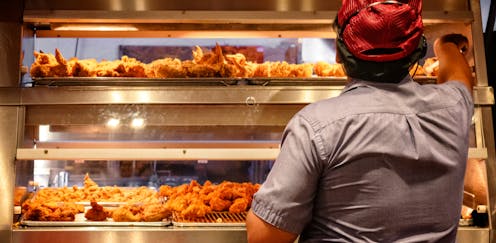Up to one in six recent migrants are paid less than the minimum wage. Here’s why
- Written by Brendan Coates, Program Director, Economic Policy, Grattan Institute

From working 20 to 30 hours[1] of unpaid overtime each week in one of Australia’s fanciest restaurants to picking fruit while being exposed to dangerous chemicals for less than $10 an hour[2], the underpayment of migrant workers is rife.
The Grattan Institute’s new report, Short-changed: How to stop the exploitation of migrant workers in Australia[3], show a broad pattern.
We’ve used two nationally representative Australian Bureau of Statistics surveys of employees and employers – Characteristics of Employment[4] and Employee Earnings and Hours[5] – to find out whether employees are paid below the national minimum hourly wage in Australia, currently $21.38 an hour or $26.73 an hour for casuals[6].
We estimate that recent migrants – those who arrived in Australia within the past five years – are twice as likely to be underpaid as migrants who have been in Australia for at least 10 years, and those born here.
Underpayment is widespread
In 2022, 5% to 16% of employed recent migrants were paid less than the national minimum wage. Between 1% and 8.5% of recent migrants were paid at least $3 less than the hourly minimum.














